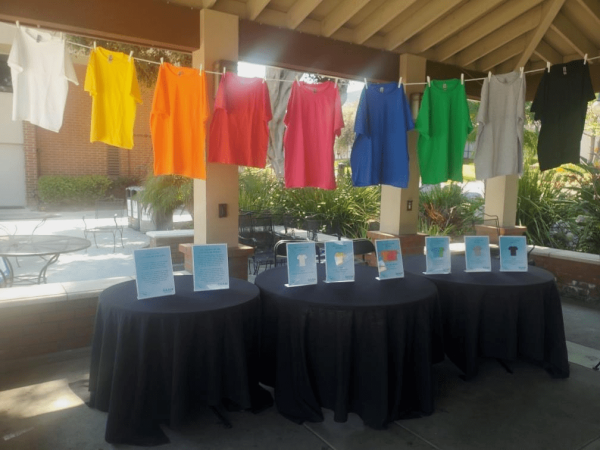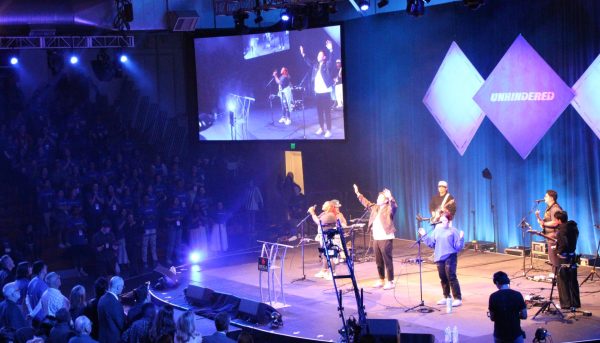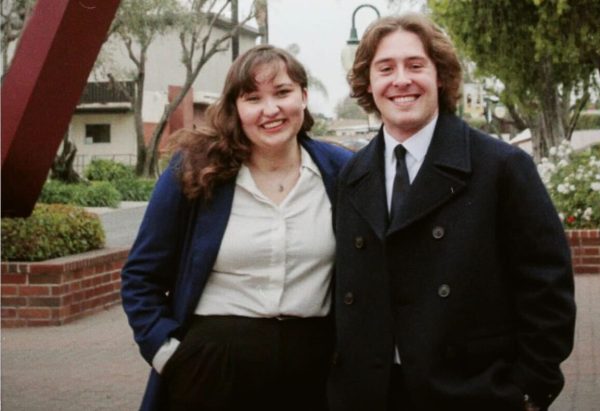Jesus Mural ignites faculty discourse
The existence and ethnicity of the monumental Jesus Mural – officially known as “The Word” – have sparked spirited debate on campus for years. However, Biola recently decided to get the discussion out into the open, starting with an interdisciplinary faculty forum entitled, “Educating for Unity: The Convergence of Art, Theology and Race at Biola University” that took place Tuesday morning.

The well-known Jesus mural on Biola’s campus has risen controversy among the student body for years; however, the complaints and concerns are now entering into faculty discussions.
April 8, 2009
The existence and ethnicity of the monumental Jesus Mural – officially known as “The Word” – have sparked spirited debate on campus for years. However, Biola recently decided to get the discussion out into the open, starting with an interdisciplinary faculty forum entitled, “Educating for Unity: The Convergence of Art, Theology and Race at Biola University” that took place Tuesday morning.
The two key points of discussion were the artist’s original intent and artistic freedom at conservative, Evangelical universities like Biola. Dr. Pete Menjares, associate provost for diversity leadership and associate professor of education, introduced the discussion and emphasized the need for Biola to “foster a culture of dialogue.” Faculty panelists included Dan Callis, professor of art, and Jonathan Puls, assistant professor of art. President Barry Corey, who has urged Biola to reach a definite conclusion on the mural’s fate, was also present.
“My strong conviction is that an academy – a university setting – is to not just jump to a conclusion, but engage in a conversation,” Corey said.
The 27-foot-tall Jesus mural was an area of contention in the recent AS presidential debate, and even aroused criticism from visiting atheist Christopher Hitchens Saturday night. Some have demanded the mural’s repainting. Others have argued that the original artwork should be preserved, despite possible discrepancies. Tuesday, Puls argued for the preservation of the mural, saying “The Word” emphasizes the majesty and sovereignty of Christ, reflects Biola’s doctrinal statement, and enables students to focus on the deity of Christ in their daily lives. The painting should be critiqued and discussed rather than destroyed, he said.
“Finding the image unsatisfactory and arguing for its destruction are two different things … If we feel a need to … approach areas of difference, let us do so to creative ends, using all of our walls, galleries, theaters, chapels and classes as sites for this discourse,” Puls said.
Artist Kent Twitchell, former professor of art at Biola, painted “The Word” from 1989 to 1990. Twitchell has voiced his frustrations over the possibility of his work being altered or destroyed completely. When students confronted Twitchell in a five-hour meeting in 1993, Twitchell ultimately volunteered to have his piece blasted over immediately. Students didn’t take him up on the offer, as a May 2008 article in The Chimes confirmed. President Emeritus Clyde Cook prohibited the removal of the mural during his time in office, and Biola presented Twitchell with an honorary doctorate for his gift, confirmed a paper by Barry Krammes, professor of art.
Twitchell volunteered, among other things, time, materials and scaffolding. The approximate value of his contributed time is $50,000. In total, Twitchell spent one year designing the mural and eight months painting the mural, which is now valued at $300,000. Twitchell poured his energy into researching and selecting a desirable style, Callis said. Thirteen students from a mural-painting class then joined Twitchell in the painting process. Twitchell’s intentions in creating the mural included gifting Biola by designing one of his best works to date, pointing directly to the majesty and authority of Christ, and emphasizing Biola’s commitment to Christ and art, Callis articulated. Puls noted that the mural is the most singularly striking image on Biola’s grounds.
“’The Word’ quite literally looms over campus both in terms of its scale and its rather strong theological arguments,” Puls said.
Twitchell has painted a variety of murals in the greater Los Angeles area – 18 major works in total. His paintings have been a driving force for change and reconciliation in the past. In one of the most violence-ridden areas of Los Angeles, Twitchell endeavored to facilitate peace between two gangs by having them work side by side to paint the mural. Police were astonished by the remarkable drop in gang violence, Callis said. Twitchell is also responsible for creating the Los Angeles Marathon Mural off the 405 San Diego Freeway in Inglewood.
A follow-up faculty discussion addressing the theological challenges associated with human depictions of Divinity as well as racial and ethnic minority concerns is scheduled for April 21. However, the discussion won’t end there. A later Q&A session for faculty will take place in the foreseeable future, possibly later in the month.
By the end of April, the faculty will have addressed reconciliation and unity on campus, the future of the mural, recommendations for additional cultural art, and suggestions for advancing a campus climate open to dialogue, as Dr. Menjares and other professors proposed. Faculty members will soon be able to discuss the topic online through forums, permitting Biola to “continue this conversation in the best way possible,” Menjares said.
Students will also be able to voice their opinions at a forum scheduled for May. The event’s details will be advertised later. Such continuous conversation is vital, Menjares said.
“We understand that the issues are so complex that we will never resolve them in a two-hour block. But we hope that this will be the beginning of what will be a series of discussions that will extend not only over the summer but well into next year, and that we would create an environment, a campus climate, a culture, that would allow us to engage one another, to truly listen and hear one another, and to suspend judgment until we have had an opportunity to hear from as many different sides of issues as we possibly can,” Menjares said.
The Chimes will continue to cover the discussion as it develops.






